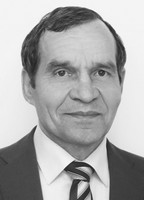Physical fitness of school children in megalopolis
Фотографии:
ˑ:
Teoriya i praktika fizicheskoy kultury №3 2017, pp.60 -62
UDC 796.011.3
Dr.Hab., Professor A.G. Shchurov1, 2
Dr.Hab., Professor S.V. Alekseev1
PhD, Associate Professor E.V. Popova1
O.V. Starolavnikova1
1St. Petersburg Academy of Postgraduate Pedagogical Education, St. Petersburg
2Military Institute of Physical Culture, St. Petersburg
The study of the school children’s physical fitness in megalopolis was performed in May 2014 and 2015 with 56 general education schools of Saint Petersburg being subject to the tests. The study data and analyses showed the physical fitness rates of the 4th, 9th and 11th class school children varying around the average and higher levels. The senior school children showed some physical fitness sagging trend in the tests that may be explained by the growing educational workloads and negative behavioural models associated with some health risks (including alcohol consumption, smoking, violations of wake-sleep and nutrition schedules etc.). The physical fitness monitoring data may be beneficial for the physical education process correction initiatives and the All-Russian Physical Culture and Sports “Ready for Labour and Defence” (GTO) Complex testing procedure.
Keywords: physical fitness, tests, physical qualities, endurance, health groups.
References
- Gritsinskaya V.L., Beketova E.V., Kornienko T.V. Sravnitelnaya kharakteristika fizicheskogo razvitiya gorodskikh i selskikh shkolnikov Krasnoyarskogo kraya [Comparative characteristics of physical development of urban and rural pupils of the Krasnoyarsk Territory]. Gigiena i sanitariya, 2012, no. 4, pp. 58-60.
- Lyakh V.I. Programmy obshcheobrazovatelnykh uchrezhdeniy. Kompleksnaya programma fizicheskogo vospitaniya uchashchikhsya 1-11 klassov [Programmes of educational institutions. Comprehensive program of physical education for 1st-11th graders]. Moscow: Prosveshchenie publ., 2004, 128 p.
- Metodicheskie rekomendatsii po organizatsii zanyatiy fizicheskoy kulturoy s uchashchimisya, otnesennymi po sostoyaniyu zdorovya k spetsialnoy meditsinskoy gruppe [Guidelines on organization of physical education lessons with pupils attributed to special health groups for health reasons]. Available at: http://fs.nashaucheba.ru/docs/270/index-1773165.html
- Konkabaeva A.E., Tykezhanova G.M., Baranova T.I., Bodeeva R.T., Rasol M. Sravnitelnaya kharakteristika fizicheskogo razvitiya i adaptatsionnykh rezervov organizma u studentov, prozhivayushchikh v gorodskoy i selskoy mestnosti [Comparative characteristics of physical development and body's adaptive capabilities of urban and rural students]. Vestnik KarGU, Karaganda, 2014, pp. 84-89.
- Suvorova A.V., Yakubova N.Sh., Ivanova N.P. Gigiena uchebnogo protsessa i sostoyanie zdorovya shkolnikov pri blochno-modulnom obuchenii [Hygiene of educational process and pupil's state of health within block-modular training]. St. Petersburg: Mechnikov NESME publ., 2014, 160 p.
- Shchurov A.G., Churganov O.A., Gavrilova E.A. Dinamika pokazateley fizicheskoy aktivnosti shkolnikov v svobodnoe ot uchebnykh zanyatiy vremya [Dynamics of pupils' physical activity rates in off-class hours]. Uch. zapiski un-ta im. P.F. Lesgafta, 2015, no. 12 (30), pp. 296-301.



 Журнал "THEORY AND PRACTICE
Журнал "THEORY AND PRACTICE